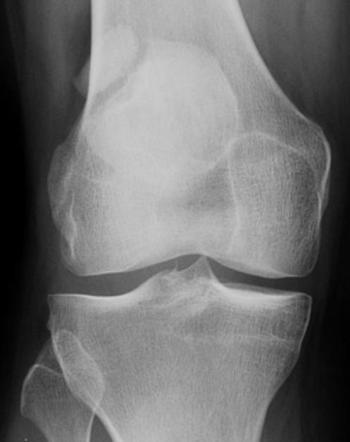Bipartite Patella in Children

Overview
Bipartite Patella is a relatively rare knee condition that affects less than 2% of the general population. This condition involves the patella, or kneecap, failing to fuse before or during adolescence. As a result, the patient has two separate pieces of bone within the patella. Even though most individuals with Bipartite Patella don’t have symptoms, some might experience pain and discomfort, especially when involved in strenuous physical activities.
Types
Three types of Bipartite Patella have been identified:
– Type 1 (Superior): The separation occurs at the top of the kneecap.
– Type 2 (Lateral): The separation occurs on the side of the kneecap.
– Type 3 (Inferior): The separation occurs at the bottom of the kneecap.
Type 2 is the most common, accounting for about half of all Bipartite Patella cases.
Causes
The exact cause of Bipartite Patella is unknown. It isn’t caused by trauma or injury to the knee; instead, it is a congenital condition, meaning that it is present from birth. However, symptoms might not appear until adolescence or adulthood, usually due to heightened physical activity that puts pressure on the knee.
Symptoms
Many individuals with Bipartite Patella are asymptomatic, meaning they show no visible signs. However, when symptoms do occur, they can include:
– Pain around the kneecap, particularly during or after physical activities
– Swelling or tenderness around the kneecap
– Difficulty in bending or straightening the knee
– A noticeable bump on the kneecap
Diagnosis
Bipartite Patella is usually diagnosed through a physical examination and imaging studies, such as X-rays, CT scans, or MRI scans. Doctors often look for any signs of separation in the kneecap and the presence of pain in the patellar region, especially during flexion and extension of the knee.
Treatment Options
The treatment of Bipartite Patella mostly depends on the severity of the symptoms. Conservative treatment is usually the first course of action and may include:
– Rest and activity modification
– Ice pack applications to reduce swelling
– Non-steroidal anti-inflammatory drugs (NSAIDs) to relieve pain
In cases where conservative treatment methods don’t work, or when the condition is severe, a surgical approach may be needed. This could involve removing the separate bone fragment or fusing the two pieces of the kneecap.
Living With Bipartite Patella in Children
Living with Bipartite Patella requires careful management to prevent exacerbating symptoms. This may involve:
– Regular use of pain relief medication as prescribed by a doctor
– Wearing a knee brace during physical activities
– Regular physiotherapy sessions to strengthen the knee muscles
– Heightened awareness of activities that could potentially worsen the condition
When to Seek Help
Immediate medical attention should be sought if:
– The patient experiences intense and persistent knee pain
– The knee becomes swollen and warm to the touch
– The patient develops a fever, which may indicate an infection
– There are changes in the appearance of the knee, such as redness or visible deformity
while Bipartite Patella can cause discomfort and affect daily life, it can be managed effectively through appropriate treatment and lifestyle modifications. It is essential to seek medical attention if symptoms persist or worsen despite treatment.
